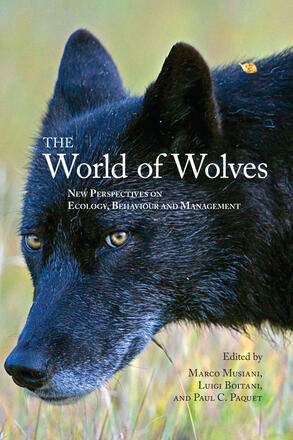
The World of Wolves
New Perspectives on Ecology, Behaviour, and Management
La description
The grey wolf is one of the world's most polarizing and charismatic species. Respected, adored, or held in awe by many as an icon of wilderness, wolves have also sparked fear and hatred when they have come into conflict with human presence. Not surprisingly, they are one of the most intensively studied mammalian species in the wild. The World of Wolves offers a fresh and provocative look at current trends in wolf and wildlife management. Representative case studies, from geographically and culturally diverse areas of the world, highlight the existing interconnections between wolves, their prey, their habitat, their ecosystems and people, and the role of science in policy formation and wolf management. In addition, the studies involve many issues (for example, population genetics and livestock husbandry practices) that are entry points into larger aspects of ecology and evolution. This book will appeal to conservationists, scientists, wildlife managers, and anyone seeking a better understanding of wolves and their co-existence with us.
Reviews
Alberta Views, December 2010
The World of Wolves, by Marco Musiani, Luigi Boitani and Paul Paquet (eds)
University of Calgary Press
$34. 95, 398 pp.Imagine sitting in front of a warm wood stove, an ancient yellow lab at your feet, to read a book about wolves - only to learn that there may be, in fact, no such thing as a wolf. And at the same time, that your lab, as fearful and unlethal a mammal as evolution could concoct, may in fact be a wolf.
Such are the mysteries and delights to be found in The World of Wolves, a brand-new book about the ecology, behaviour and management of wolves and the environments in which they live. Be forewarned: this isn't Barry Lopez's encyclopaedic Of Wolves and Men, which remains (in my opinion) the single best book on wolves. Instead, consider The World of Wolves an update of Lopez's 1978 masterpiece, a collection of nine scientific papers about very specific lupine topics that together cover more ground than a dispersing wolf.
You will find gray wolves, red wolves, Mexican wolves and just about every kind of "wolf" you can imagine. Wolves from as far away as Finland and as close to home as Longview. Many are hopelessly endangered, others have been gratefully or grudgingly recovered (depending on your perspective). You'll also even find the coyote roaming these pages, the great Trickster who has somehow found its way into the wolf's very bones, where it defies our attempts to cling to taxonomic categories that modern genetics no longer support.
Readers of Alberta Views might also like to know that much of the research documented here was done close to home. For instance, Mark Hebblewhite, a Canadian biologist who now teaches at the University of Montana, tugs at the wolf to see what other parts of the world are attached to it. As John Muir intuited so long ago, it seems that the return of wolves to Yellowstone and Banff national parks has helped bring back streamside shrubs and aspen forests - and the trills of song birds that inhabit them.
Like the delights Muir discovered on his rambles through the Sierras, the ones found in The World of Wolves require a great deal of work before you can enjoy them. Each chapter is really an academic paper infected with the idiosyncratic jargon and drudging style that plagues scientific journals across the disciplines. It seems clear that the intent of this book, like its previously published companion, A New Era for Wolves and People (U of C Press 2009), is to improve the wolf's future by educating more of us about what they are and how we can live together - and yet I wonder if anyone but a fellow scientist or an energetic graduate student will have the fortitude to wade through pages potholed with terms like "karyotype" and "microsatellite loci" and "p-value. "
Still, there is much for the interested city slicker or rancher to glean from these pages. The key, I think, is to skim: read the introduction (in each chapter) and then skip down to the discussion and conclusion sections, where these scientists may well revolutionize everything you thought you knew about wolves.
Jeff Gailus
- Jeff Gailus
Writer Author
Imagine sitting in front of a warm wood stove, an ancient yellow lab at your feet, to read a book about wolves—only to learn that there may be, in fact, no such thing as a wolf. And at the same time, that your lab, as fearful and unlethal a mammal as evolution could concoct, may in fact be a wolf. Such are the mysteries and delights to be found in The World of Wolves.
—Jeff Gailus, AlbertaViews
Buy this book.
—Pat Goodman, The Wolf Park News